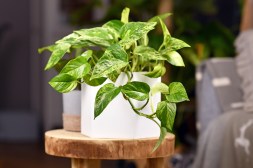Stain Busters: Innovative Techniques to Tackle Tough Laundry Challenges
Stains are an inevitable part of life—whether it’s a splash of red wine at dinner or a smear of chocolate on a shirt after dessert. Fortunately, with the right techniques and tools, you can tackle these laundry challenges head-on. In this article, we’ll explore innovative stain removal techniques that will help you keep your clothes looking fresh and clean.
Understanding Different Types of Stains
Before diving into stain removal techniques, it’s important to understand that not all stains are created equal. Stains can be classified into two main categories: water-soluble and oil-based. Water-soluble stains include things like coffee, juice, or wine—these are best treated with cold water. Oil-based stains include grease or lipstick; they require different approaches for removal and typically need a solvent to break them down.

Pre-treatment Techniques for Effective Stain Removal
One of the most effective stain removal techniques is pre-treatment. Start by gently blotting the stain with a clean cloth to absorb any excess liquid without rubbing it in further. Then apply a small amount of laundry detergent directly onto the stain and let it sit for about 5-10 minutes before washing as usual. For tougher stains, consider using specialized pre-treaters available in stores that target specific types of stains.
Natural Remedies for Stain Removal
If you prefer natural solutions over chemical ones, there are several household items that can work wonders on stubborn stains. For instance, baking soda mixed with water creates a paste that can be applied to grease stains before laundering. White vinegar is also effective against deodorant marks; just dab some on the area before washing. Additionally, lemon juice can help lighten ink stains when mixed with baking soda.
The Power of Hot Water vs Cold Water
When it comes to washing stained clothes, temperature matters significantly in stain removal effectiveness. For protein-based stains such as blood or sweat, always use cold water since hot water can set these types of stains permanently into fabric fibers. On the other hand, oil-based or greasy food stains often benefit from hot water washes as heat helps dissolve oils more effectively.
Preventing Future Stains: Proactive Measures
After you’ve successfully removed tough stains from your favorite garments, taking proactive measures can help prevent future mishaps. Consider wearing aprons during meals or using coasters under drinks to minimize accidental spills on clothing. Additionally, treating potential problem areas (like collars and cuffs) with extra detergent during wash day will create an added layer of protection against staining.
In summary, tackling tough laundry challenges doesn’t have to be daunting if you have the right knowledge and tools at your disposal. By understanding various types of stains and employing effective pre-treatment methods along with natural remedies when necessary—and knowing how temperature affects cleaning—you’ll become equipped as a true “stain buster” ready to keep your wardrobe pristine.
This text was generated using a large language model, and select text has been reviewed and moderated for purposes such as readability.


